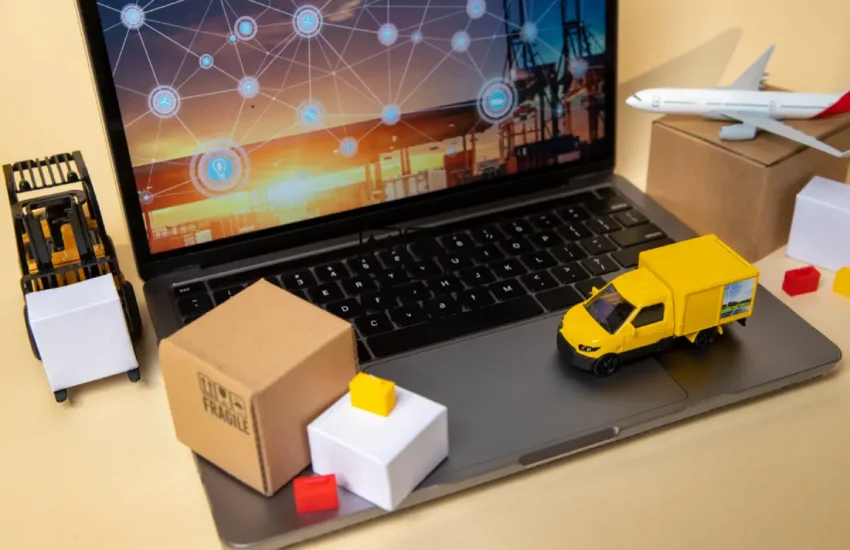Delivery Management Tips & Tricks Every Business Should Know
Have you ever wondered what sets successful businesses apart from the competition? Well, one of the key ingredients is mastering the art of delivery management. Yep, you heard that right! From ensuring your products reach customers on time to providing top-notch service, delivery management is where the magic happens.

Understanding Delivery Management
Key Components of Delivery Management:
- Route Optimization – Efficiently planning delivery routes to minimize travel time and fuel consumption.
- Inventory Management – Keeping track of stock levels and ensuring products are available for delivery.
- Real-Time Tracking – Utilizing technology to monitor delivery progress and address any issues promptly.
- Customer Communication – Providing timely updates to customers regarding their delivery status and any delays.
- Performance Analytics – Analyzing delivery data to identify areas for improvement and optimize operations.
Now that we have a foundational understanding, let’s delve into some actionable tips and tricks to enhance your delivery management practices.
1. Embrace Technology Solutions
In today’s digital age, leveraging technology is paramount for effective delivery management. Investing in a robust delivery management solution can streamline processes, improve efficiency, and provide valuable insights into your operations. Look for features such as route optimization algorithms, real-time tracking capabilities, and customizable reporting tools to meet your specific needs.
Benefits of Technology Solutions:
- Efficiency – Automating manual tasks and optimizing routes can save time and resources.
- Visibility – Real-time tracking allows you to monitor deliveries and address issues proactively.
- Data Insights – Analyzing delivery data can help identify trends, optimize routes, and enhance overall performance.
- Customer Experience – Providing accurate delivery estimates and updates can boost customer satisfaction and loyalty.
2. Prioritize Route Optimization
Optimizing delivery routes is a cornerstone of efficient delivery management. By carefully planning routes based on factors such as distance, traffic patterns, and delivery windows, businesses can minimize fuel costs, reduce vehicle wear and tear, and improve delivery times. Consider using route optimization software to automate this process and generate the most efficient routes for your drivers.
Tips for Route Optimization:
- Consolidate Deliveries – Combine multiple orders into one route to reduce mileage and maximize efficiency.
- Consider Traffic Patterns – Factor in traffic congestion and peak times when planning delivery routes.
- Utilize Geolocation Data – Use GPS technology to track vehicle locations in real-time and adjust routes as needed.
- Optimize Delivery Windows – Coordinate delivery times to minimize waiting and maximize efficiency for both drivers and customers.
3. Implement Inventory Management Systems
Effective inventory management is essential for ensuring smooth delivery operations. By maintaining accurate stock levels, businesses can prevent stockouts, minimize delays, and fulfill orders in a timely manner. Implementing inventory management software that integrates with your delivery management system can streamline order processing and inventory replenishment processes.
Inventory Management Best Practices:
- Real-Time Tracking – Monitor inventory levels in real-time to anticipate demand and prevent stockouts.
- Automated Reordering – Set up automated reorder points to replenish stock levels and avoid shortages.
- Barcode Scanning – Use barcode technology to track inventory movement accurately and reduce manual errors.
- Forecasting and Demand Planning – Analyze sales data to forecast demand and optimize inventory levels accordingly.
4. Enhance Customer Communication
Effective communication is key to providing a positive delivery experience for customers. Keep customers informed at every stage of the delivery process, from order confirmation to final delivery.
Utilize automated email or SMS notifications to provide updates on order status, delivery schedules, and any unexpected delays. Clear and transparent communication can help manage customer expectations and build trust in your brand.
Tips for Customer Communication:
- Order Confirmation – Send a confirmation email or SMS immediately after an order is placed to reassure customers.
- Delivery Updates – Provide regular updates on the status of deliveries, including estimated arrival times and tracking information.
- Proactive Notifications – Alert customers in advance of any potential delays or issues with their delivery.
- Post-Delivery Feedback – Solicit feedback from customers after delivery to gather insights and identify areas for improvement.
5. Monitor Performance Metrics
Monitoring key performance metrics is essential for evaluating the effectiveness of your delivery management efforts and identifying areas for improvement.
Track metrics such as on-time delivery rates, delivery costs, customer satisfaction scores, and driver performance to gauge the overall health of your delivery operations. Use this data to identify trends, set benchmarks, and implement targeted strategies to optimize performance.
Key Performance Metrics to Monitor:
- On-Time Delivery Rate – Percentage of deliveries completed within the specified timeframe.
- Delivery Cost per Order – Total delivery expenses divided by the number of orders delivered.
- Customer Satisfaction Score – Measure of customer satisfaction based on feedback and ratings.
- Driver Efficiency – Assess driver performance based on factors such as route adherence and delivery times.
Conclusion
So, seize the opportunity, implement these strategies, and embark on a journey towards delivery excellence—one step at a time. Your customers await, and the possibilities are endless!


